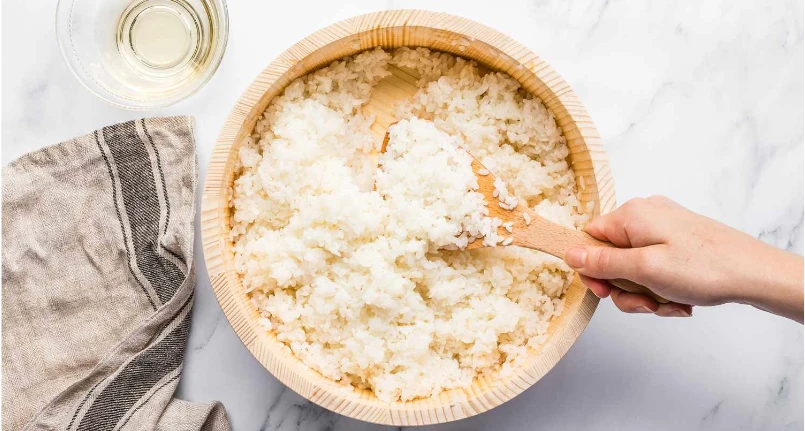Introduction
Caesar Salad is perhaps one of the best known and codified salads in the world. The bowl prepared with lettuce, grilled chicken, creamy dressing, cheese and croutons has an interesting nutritional profile that can be made even healthier by calibrating the ingredients well, and avoiding others.
Caesar Salad: how is it prepared?
The origins of Caesar salad are uncertain. Those who claim come from the United States, than from Anglo-Saxon European countries. Although the name of who invented the famous salad is not known, the ingredients of the classic recipe are well known: romaine lettuce, croutons, flaked Parmesan cheese and a dressing based on anchovies, olive oil, garlic, lemon, egg yolks egg and Dijon mustard. But not all Caesar salads are created equal. Creative alternatives and replacement of ingredients are born: croutons become wholemeal, cabbage or songino are used instead of romaine lettuce, and smoked salmon or walnuts or sautéed tofu are added instead of chicken.
Traditional Caesar salads can be high in saturated fat, thanks to the dressing and cheese. Salads that use “light” dressings are relatively lower in fat, but can still be high in sodium.
| Comparison of different Caesar Salads per serving | Caesar salad without chicken without dressing | Chicken Caesar salad with dressing | Caesar salad without with ” light ” dressing | Caesar salad with chicken and dressing | Caesar salad with chicken and light dressing |
|---|---|---|---|---|---|
| Calories | 74 | 156 | 91 | 142 | 77 |
| Protein gr | 4 | 5 | 4 | 9 | 9 |
| Total fat gr | 4 | 12 | 4 | 11 | 3 |
| Saturated fat gr | 2 | 3 | 2 | 2 | 1 |
| Carbohydrates gr | 7 | 7 | 10 | 3 | 6 |
| Fibers gr | 2 | 2 | 2 | 3 | 2 |
| Cholesterol (mg) | 8 | 14 | 8 | 29 | 23 |
| Sodium (mg) | 225 | 407 | 286 | 444 | 434 |
The dressing: beware of fats
Caesar salad is typically served with its own dressing, called Caesar dressing. It is made with anchovies, garlic, mayonnaise, lemon juice, Dijon mustard, oil, salt and parmesan. There are several varieties of Caesar dressing on the market, including regular, light, and fat-free ones, as well as vegan versions made with avocado oil or other vegetable oils instead of the eggs in the mayonnaise. Though homemade dressing is a healthier and more balanced option. Traditionally, the dressing does not involve the use of cream .
Caesar salad: pros and cons
Caesar salad can be a satisfying and tasty way for a quick lunch break or a fresh summer dinner. Among the pros of this mix there is certainly that of consuming vegetables, such as lettuce, to which other vegetables such as carrots, tomatoes, and cucumbers can be added, which therefore increase the nutrients, including some essential vitamins and minerals. Furthermore, Caesar salad can be very filling and can be considered as a main course or side dish. The fiber and water content in lettuce and other added greens help keep you feeling full.
Le tradizionali insalate Caesar sono per lo più lattuga e possono mancare di varietà Uno dei principali vantaggi delle insalate è che offrono un modo semplice per mangiare molte verdure. Le verdure sono alcune delle migliori fonti di molti nutrienti di cui il tuo corpo ha bisogno, tra cui fibre, vitamine e minerali, pur rimanendo a basso contenuto di grassi e calorie.
Caesar salads, however, don’t come with a wide variety of vegetables. While many other salads boast a mix of varied greens, the original Caesar is mostly romaine lettuce. Another element against, in addition to the reduced content of mineral salts and vitamins, is given by the condiment often rich in saturated fats and sodium. While there are light, fat-free dressings, it’s best to reduce salad portions and dress sparingly.
How to prepare Caesar Salad in a healthy way
It’s easy to make a few simple changes to increase the nutritional value of a Caesar salad. For example:
- Make the salad at home and don’t buy pre-packaged products
- Replace the mayonnaise in the dressing with reduced-fat Greek yogurt to add protein and reduce fat
- Replace the croutons with walnuts or sunflower seeds, roasted chickpeas or toasted corn: the crunchiness is maintained on the palate, but they are much more nutritious
- Add mixed greens to traditional romaine lettuce, such as tomatoes, cabbage , cucumbers and radishes, rich in vitamins, minerals, fiber and other nutrients
- Add a source of protein: chicken breast, beans or other legumes, salmon, shrimp, tofu, or tempeh
- Make homemade croutons, perhaps using wholemeal or rye bread, and olive oil, to reduce saturated fat and sodium (6-7 croutons per serving)
- Do not overdo the dressing and dressing: 1 teaspoon (14 grams) of dressing per serving of salad
- Avoid sauces and season with extra virgin olive oil, lemon juice and zest and aromatic herbs
- Do not eliminate the cheese , a precious source of protein and calcium : add 30 g of Parmesan flakes per serving




